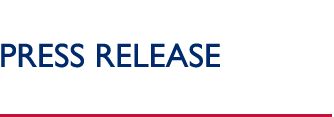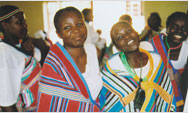World Water Day
FOR IMMEDIATE RELEASE
March 22, 2009
Press Office: 202-712-4320
Public Information: 202-712-4810
www.usaid.gov
WASHINGTON, D.C. – March 22 is World Water Day an international day of observance that grew out of the 1992 United Nations Conference on Environment and Development (UNCED) in Rio de Janeiro.
The focus of World Water Day this year will be Transboundary Waters: Sharing Water, Sharing Opportunities.
The Senator Paul Simon Water for the Poor Act of 2005 makes access to safe drinking water, sanitation, and hygiene, within the broad context of sound water resources management, a clear objective for U.S. foreign assistance.
The U.S. Agency for International Development (USAID) supports $300 million per year in programs in poor and conflict ridden countries around the world. These programs’ primary focus are in water issues associated with drinking water, sanitation and hygiene, because access to clean water is fundamental to life, peace, and security. In 2007, USAID provided clean water to over 2 million people in these countries.
Safe drinking water is becoming ever more precious and hard to find. More than a billion people in the developing world do not have access to clean water, and in many cases rely on water from polluted rivers, lakes, and unsafe wells or piped water supplies. The consequences are catastrophic, and the ever increasing competition for decreasing amounts of clean water contributes to conflict at many levels and can lead to outbreaks of serious diseases that can spread around the globe.
About 1.7 million children under age 5 died last year from diarrheal diseases caused by unsafe water, and inadequate sanitation and hygiene in developing countries. Millions more were put at significant risk of exposure to life threatening water-borne infections, such as cholera, typhoid fever and dysentery. Contaminated drinking water is a threat to people living with HIV/AIDS whose bodies have little ability to fight off infections that come with contaminated water.
The recent cholera outbreak in Zimbabwe is a stark example of the need for clean, safe drinking water. More than 91,000 people have contracted the disease and more than 4,000 have died from this easily preventable and treatable intestinal infection. The disease is rampant because drinking water has been contaminated as a result of the poor state of water supply, sanitation, and hygiene services.
Those without safe water, sanitation, and hygiene are likely to be poor, hungry and malnourished. The increasing scarcity of safe water, combined with rapid worldwide population growth and environmental degradation, is also contributing to biodiversity loss and the world’s spiraling food insecurity crisis.
Improving access to safe drinking water is an important component of USAID’s programs in health, economic growth, environment, and international disaster response. Household water treatment and safe storage reduces waterborne disease, empowers families and communities, and improves productivity. These measures complement community and municipal water supply infrastructure programs by providing immediate access to safe water while construction is planned or implemented. Several options for ensuring safe drinking water at the household or the point-of-use are available, including chlorination, filtration, solar disinfection, and other technologies. These inexpensive and easy to use approaches can be deployed and adopted rapidly.
There are many innovative examples of how USAID works to increase access to safe water and improve water quality in households:
- In Kenya, non-governmental and faith-based organizations, as well as a group of women living with HIV/AIDS, distribute safe water products and demonstrate how to use these products for communities. These people play a powerful role in shaping the opinions, attitudes and behaviors of their communities.
- In Madagascar, efforts to improve hygiene are having a positive effect on school children. Schools that use clean latrines and purified drinking water, and promote proper hand washing techniques are noticing more students in the classroom and fewer missing days from sickness. Students attending classes regularly helps to ensure a wide range of better outcomes for their futures as their country develops.
- A partnership to reach 1.1 million urban and rural poor in India with point-of-use water disinfection and zinc treatment has delivered over 9.6 million liters of treated water in 10 months.
Today, World Water Day, USAID renews its commitment to increased access to water and sanitation for those in need.
For more information about USAID, please visit: www.usaid.gov.
The American people, through the U.S. Agency for International Development, have provided economic and humanitarian assistance worldwide for nearly 50 years.




